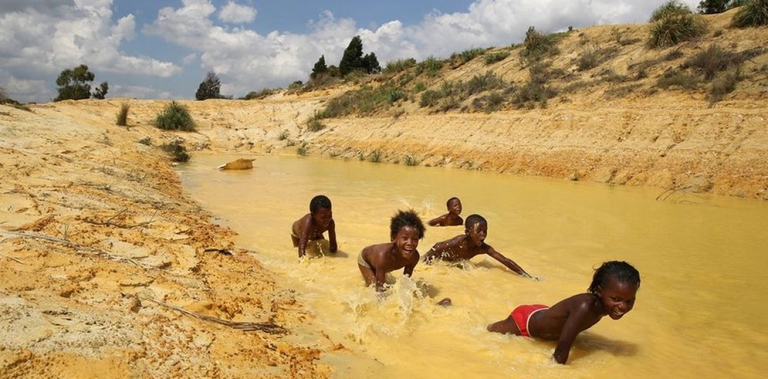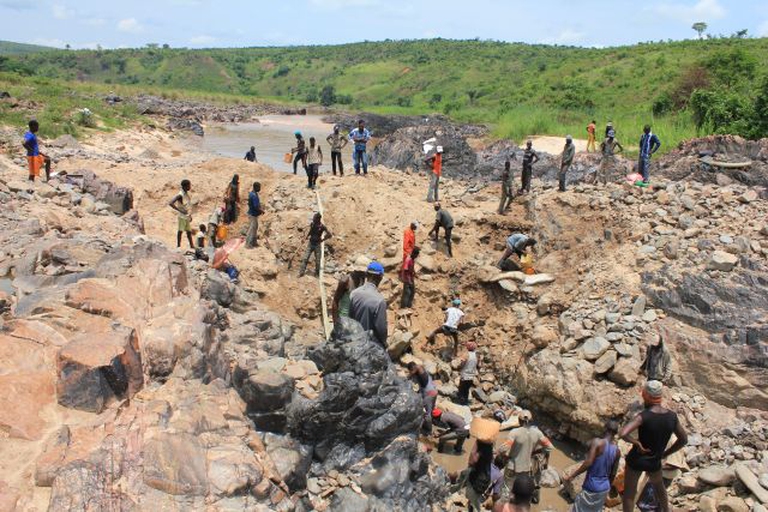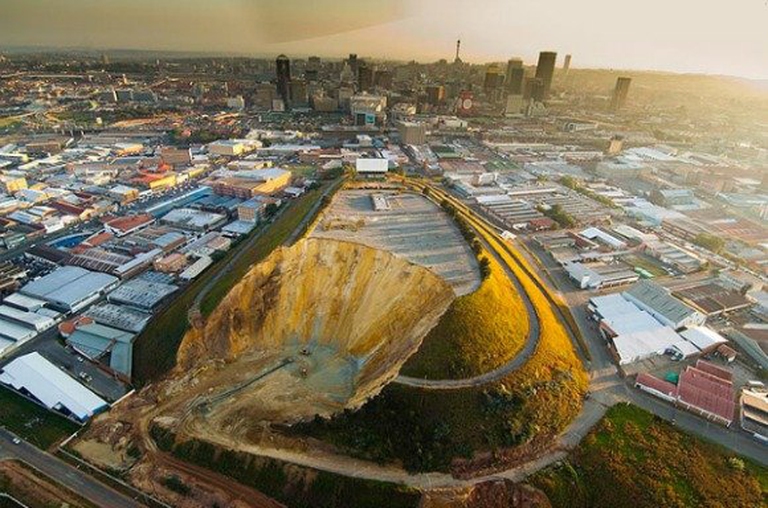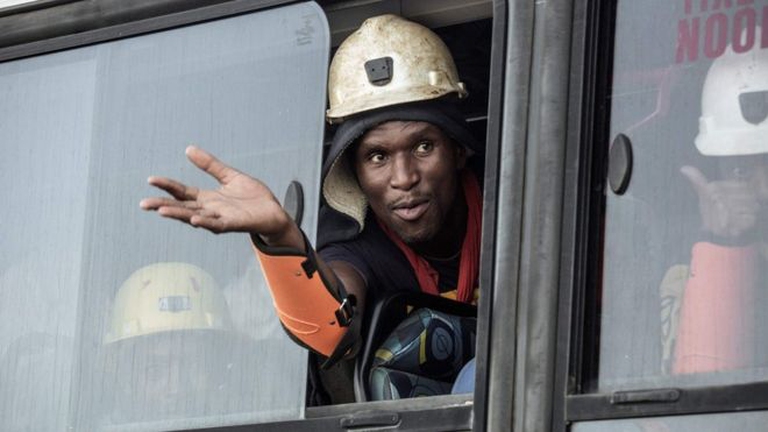
South African court dismisses a major lawsuit by 140,000 Zambian women and children against Anglo American for Kabwe lead poisoning. A setback for affected communities enduring the lasting impact of lead contamination.
Gold mines, even abandoned ones, are still poisoning thousands of people in South Africa due to high concentrations of heavy metals, radiation and contaminated water.
Johannesburg, in South Africa was spawned by gold mining when the metal was discovered in the 1880s in the Witwatersrand goldfield, the world’s biggest, arching around the south and west of the city. More than 600 mines lie abandoned with much of their waste piled up high next to residential communities, most of which are marginalised, poor and black.
Johannesburg and surrounding communities’ main concern are mine mountain dumps, made up of crushed, sand-like refuse materials known as tailings produced during the mining process, a complex mixture of metals and dust particles.
Read more: The Kabwe lead mine, closed over 20 years ago, is poisoning thousands of children in Zambia
“When the wind blows, fine particles from these man-made dumps are carried up into the air and deposited on our homes,” Rasalind Plaatjies, a Soweto resident, says. “It’s no ordinary dust, either: the residue of decades of mining, it can contain traces of everything from copper and lead to cyanide and arsenic”.
Experts describe the mine dumps in Johannesburg as catastrophic and dangerous. “An estimated 600,000 metric tonnes of radioactive uranium are buried in waste rock in and surrounding Johannesburg, that is around three times what was exported during the Cold War”. It’s heartbreaking that residents are forced to live in these conditions, according to Doctor Frank Winde, an academic at South Africa’s North West University. “The radioactive metal can work its way into rivers when it dissolves in rain and runs off the mounds, or when abandoned mines are flooded”.
Environmental justice activist Mariette Liefferink says gold mining has both endangered and disempowered people. “There have been several discharges of potentially radioactive and toxic slurry, and acid mine water from the pipelines and unfortunately, the underground water table has been contaminated”. She warned that the area is stuffed with dangerous materials that can contribute to immediate and long-term medical problems ranging from asthma and skin rashes to cancer and organ damage.
HUMAN RIGHTS COMMISSION – REPORT ON THE NATIONAL HEARING ON THE UNDERLYING SOCIO-ECONOMIC CHALLENGES OF MINING AFFECTED COMMUNITIES ~ Mariette Liefferink https://t.co/5Dtkn3jbP2
— Mariette Liefferink (@mariettelieffer) 26 agosto 2018
Meanwhile, the International Human Rights Clinic (IHRC) says previous and current governments haven’t complied with international law, reacting too slowly and doing too little to reduce the harm from abandoned and unprotected active mines. “Only then will South Africa live up to the human rights commitments it made when apartheid ended,” Bonnie Docherty, senior lecturer and researcher at IHRC said.
“Gold mining has both endangered and disempowered the people of this country for decades. But despite some signs of progress, the government’s response to the crisis has been insufficient and unacceptably slow,” she added.
Read more: Aguas de Oro. The documentary about a Peruvian woman standing alone against the giants of mining
The South African mining industry has in the past implemented various strategies to reduce pollution from mine dumps. These have included rehabilitating areas by spraying mine dumps with water, planting grass, engaging in clean up operations; offering free health screenings; ensuring water treatment plants are adequate to prevent decaying; and improving control of run-off and seepage from tailing dams.
Although South Africa is a leading gold producer, safety in the industry has been questioned in recent years. Some environmental right groups argue that spraying water and planting grass on mine dumps is ineffective as the grass withers during the dry season, and water is rapidly absorbed or evaporates.
In February this year, 955 workers in the Beatrix mine in the town of Welkom, 290 kilometres south-west of Johannesburg, were safely brought back to the surface after being trapped for days. They’d been stuck underground since a power cut struck and back-up generators failed to work. “The accident is thought to have occurred when a storm knocked over an electricity pylon close to the site, triggering a huge power cut,” James Wellsted, firm spokesperson for the Sibanye-Stillwater, which owns the mine, said.
Across South Africa‚ mining towns are under siege from illicit syndicates. These criminal gangs continue working in abandoned and disused mine tunnels. The decline of the gold mining sector, unemployment, illegal migration and poverty have all contributed to the growth of such criminal activity.
Furthermore, these criminal gangs employ desperate young men who flock to South Africa from impoverished towns and villages in neighbouring Zimbabwe‚ Lesotho and Mozambique. This work is dangerous and often deadly: as well as digging in the disused mines, heavily armed gangs also steal gold from the remaining working shafts.
Siamo anche su WhatsApp. Segui il canale ufficiale LifeGate per restare aggiornata, aggiornato sulle ultime notizie e sulle nostre attività.
![]()
Quest'opera è distribuita con Licenza Creative Commons Attribuzione - Non commerciale - Non opere derivate 4.0 Internazionale.
South African court dismisses a major lawsuit by 140,000 Zambian women and children against Anglo American for Kabwe lead poisoning. A setback for affected communities enduring the lasting impact of lead contamination.
Controversial African land deals by Blue Carbon face skepticism regarding their environmental impact and doubts about the company’s track record, raising concerns about potential divergence from authentic environmental initiatives.
Majuli, the world’s largest river island in Assam State of India is quickly disappearing into the Brahmaputra river due to soil erosion.
Food imported into the EU aren’t subject to the same production standards as European food. The introduction of mirror clauses would ensure reciprocity while also encouraging the agroecological transition.
Sikkim is a hilly State in north-east India. Surrounded by villages that attracts outsiders thanks to its soothing calmness and natural beauty.
Sikkim, one of the smallest states in India has made it mandatory for new mothers to plant saplings and protect them like their children to save environment
Chilekwa Mumba is a Zambian is an environmental activist and community organizer. He is known for having organized a successful lawsuit against UK-based mining companies.
What led to the Fukushima water release, and what are the impacts of one of the most controversial decisions of the post-nuclear disaster clean-up effort?
Nzambi Matee is a Kenyan engineer who produces sustainable low-cost construction materials made of recycled plastic waste with the aim of addressing plastic pollution and affordable housing.














